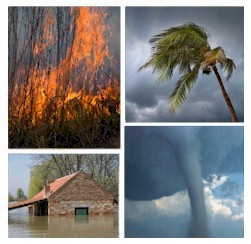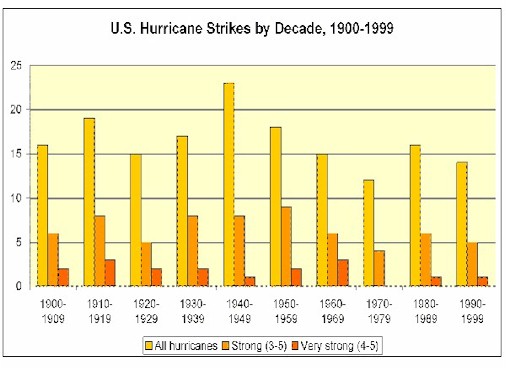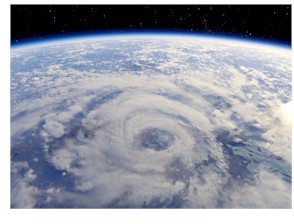|
|


Disaster Alert Systems
 This section of our technical library presents articles written about Emergency Alert Systems and Disaster Recovery definitions, terms and related information.
This section of our technical library presents articles written about Emergency Alert Systems and Disaster Recovery definitions, terms and related information.
The 911Broadcast emergency notification and alert service can deliver a large number of phone calls using a network of phone systems employing digital phone lines simultaneously. Should a disaster such as a snow storm, wild fire or flood hit your area, 911Broadcast systems can alert your community quickly providing specific instructions if an evacuation is required.
This service is available using our emergency broadcasting systems. If a dangerous chemical spill occurs in your community, you can target specific areas to call. If a severe snow storm hits your area, your community can be notified of school closings or event cancellations.
Contact DSC Today for a FREE analysis and quote and to learn more about our emergency notification systems and services.
Hurricanes and Global Warming: Is There a Link?
By George Taylor
I could see this one coming.
The other day a lady in my department saw me and said, "Well, George, with all these hurricanes it's pretty clear that global warming is happening, right?" I think Jane was just being playful, because she's heard me talk about global warming and knows of my "politically incorrect" viewpoint on this issue, Yet she raises a question that a lot of people have been asking: does the busy hurricane year in the Atlantic have anything to do with global warming?
The short answer: no.
The long answer:
Long-term statistics on hurricanes are quite good, so we can have some confidence in the trends we see in hurricane counts. There are two reasons for this: (1) hurricanes are big, powerful storms and very hard to miss; (2) they are well-defined. The Saffir-Simpson scale uses wind speed (one-minute average) to define a hurricane's strength, starting at 74 mph (Category 1) and ending at speeds above 155 mph (Category 5). Other rating systems use central pressure as a criterion.

Figure 1, obtained from data provided by the National Hurricane Center, shows hurricane strikes (landfalls) by decade in the U.S. since 1900. The 1940s were rather busy, the 70s the quietest, and the 1990s pretty close to the long-term average. A simple linear fit suggests a decrease over time. This is a result echoed by Easterling, et al (2000), who said, "the number of intense and landfalling Atlantic hurricanes has declined." In the Gulf of Mexico there is "no sign of an increase in hurricane frequency or intensity," according to Bove, et al (1998). For the North Atlantic as a whole, according to the United Nations Environment Programme of the World Meteorological Organization, "Reliable data … since the 1940s indicate that the peak strength of the strongest hurricanes has not changed, and the mean maximum intensity of all hurricanes has decreased."
Granted, there has been an upswing in the Atlantic since 1995, and this year's bumper crop of storms has struck Florida in numbers and intensities seldom occurring before. A sign of things to come, especially in a warmer world? Not according to Bill Gray's Tropical Forecast group at Colorado State University. Gray, who has developed successful methods for predicting hurricane activity, said, "Various groups and individuals have suggested that the recent large upswing in Atlantic hurricane activity (since 1995) may be in some way related to the effects of increased man-made greenhouse gases such as carbon dioxide (CO2). There is no reasonable scientific way that such an interpretation of this recent upward shift in Atlantic hurricane activity can be made."
And there is no reason to expect increases in hurricanes due to greenhouse warming. Climate models, for all their problems, are unanimous in at least one respect: they predict that most of the future warming will be in high latitudes, in the polar regions. This will reduce the north-south temperature gradient and make poleward transfer of heat less vigorous -- a task in which tropical storms play a major role. All other things being equal, a warmer world should have fewer, not more, hurricanes.
The same effect should reduce the overall intensity of mid-latitude storms as well. Does it? Let's examine the evidence.
Schwartz and Schmidlin (2002) analyzed frequencies of blizzards in the US since 1959. Defining a blizzard as a storm with falling or blowing snow, visibilities less than 400 meters and winds over 16 m/sec, they concluded that there have been increasing numbers of blizzards reported, while the area affected by all blizzards has not changed significantly. This would indicate that blizzards are becoming smaller. It is also possible that "NWS is recording smaller, weaker blizzards in recent years that went unrecorded earlier in the period, as occurred also in the official record of tornadoes in the United States," which would suggest that blizzard frequency increases may be overstated.
Changnon and Changnon (2000) studied hail frequencies in the US over the last century. They found that "the national average based on all hail values formed a bell-shaped 100year distribution with hail occurrences peaking in mid-century." Thunderstorm distributions were similar to the hail results. Further, the authors found that hail insurance loss values have declined since the 1950s, in agreement with the hail results.
Zhang, et al (2000) examined storm activity along the US East Coast over the twentieth century. After stating, "it has been speculated that future global warming will change the frequency and severity of tropical and extratropical storms," the authors used historical data in an attempt to help predict future trends. Using a variety of indices, including storm surge water levels, the authors found "no significant trend in storm activity during this century along the East Coast." The real problem along the coastline, they say, is not changing climate but changing land use, as more and more development occurs along the shorelines, creating greater susceptibility to storm damage.
Gulev, et al (2000) employed NCEP/NCAR reanalysis data since 1958 to study the occurrence of winter storms over the northern hemisphere. They found a statistically significant (at the 95% level) decline of 1.2 cyclones per year for the period, during which temperatures reportedly rose in much of the hemisphere.
"Global warming causes increased storminess" makes for interesting headlines. It also violates fundamental scientific truth and the lessons of history.
George H. Taylor is Certified Consulting Meteorologist and State Climatologist, Oregon.
References
Bove, M.C., Zierden, D.F. and O'Brien, J.J., 1998. Are gulf landfalling hurricanes getting stronger? Bulletin of the American Meteorological Society 79: 1327-1328.
Changnon, S.A. and Changnon, D., 2000. Long-term fluctuations in hail incidences in the United States. Journal of Climate 13: 658-664.
Easterling, D.R., Evans, J.L., Groisman, P.Ya., Karl, T.R., Kunkel, K.E. and Ambenje, P. 2000. Observed variability and trends in extreme climate events: A brief review. Bulletin of the American Meteorological Society 81: 417-425.
Gulev, S.K., Zolina, O. and Grigoriev, S. 2001. Extratropical cyclone variability in the Northern Hemisphere winter from the NCEP/NCAR reanalysis data. Climate Dynamics 17: 795-809.
Schwartz, R.M. and Schmidlin, T.W., 2002. Climatology of blizzards in the conterminous United States, 1959-2000. Journal of Climate 15: 1765-1772.
Zhang, K., Douglas, B.C. and Leatherman, S.P., 2000. Twentieth-Century storm activity along the U.S. East Coast. Journal of Climate 13: 1748-1761.
Hurricanes - Emergency Dialer For Hurricane Warnings
 Should a hurricane threaten your community, our phone services can warn your residents quickly. With our emergency notification phone service, you can broadcast warning messages to thousands of households in your community warning of catastrophic disasters including hurricanes and severe weather warnings.
Should a hurricane threaten your community, our phone services can warn your residents quickly. With our emergency notification phone service, you can broadcast warning messages to thousands of households in your community warning of catastrophic disasters including hurricanes and severe weather warnings.
Messages can be simultaneously delivered in just minutes using our network of phone systems and services. Pre-recorded warning messages can be played giving households information regarding the hurricane including direction, force and whether a community evacuation is planned or necessary. You can send a broadcast warning to specific neighborhoods or communities in the event of a hurricane and provide priority delivery of these messages to those in the immediate proximity of this severe storm. Multiple messages can be delivered to different members of the community based upon proximity to the hurricane. Calls can be directed to operators that are standing by to handle special individual emergencies.
Messages can also be broadcast seeking volunteers or special assistance from emergency personnel.
Other applications include warning residents when the danger of a hurricane is escalated and evacuation is imminent. Travel restrictions can likewise be broadcast using this service.
Hurricane alert messages sent to households in this fashion can be simple warnings with specific or general instructions. If the community needs feedback from the call, an interactive response can be programmed into the message allowing the person to either acknowledge the call or to contact someone. Messages can vary based upon proximity to the event, with different degrees of broadcast warning and instructions.
To learn more about our hurricane warning emergency response and disaster recovery phone service, please visit our Emergency Broadcast System web page.
Contact DSC Today for a FREE analysis and quote and to learn more about our emergency notification phone services.
|




 This section of our technical library presents articles written about Emergency Alert Systems and Disaster Recovery definitions, terms and related information.
This section of our technical library presents articles written about Emergency Alert Systems and Disaster Recovery definitions, terms and related information.

 Should a hurricane threaten your community, our phone services can warn your residents quickly. With our emergency notification phone service, you can broadcast warning messages to thousands of households in your community warning of catastrophic disasters including hurricanes and severe weather warnings.
Should a hurricane threaten your community, our phone services can warn your residents quickly. With our emergency notification phone service, you can broadcast warning messages to thousands of households in your community warning of catastrophic disasters including hurricanes and severe weather warnings.